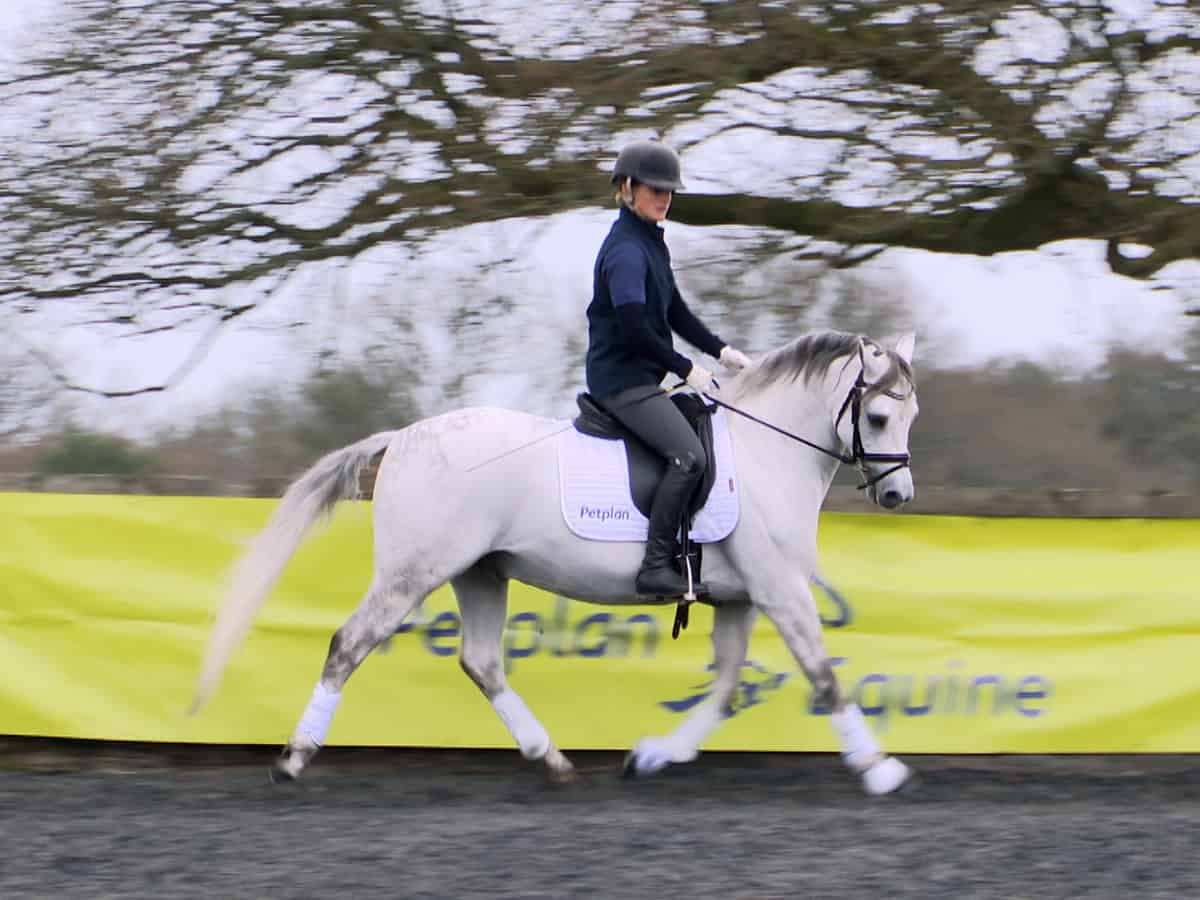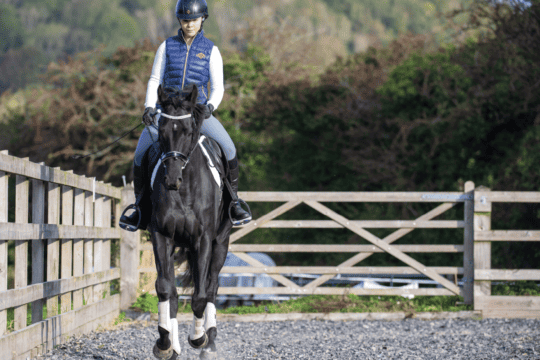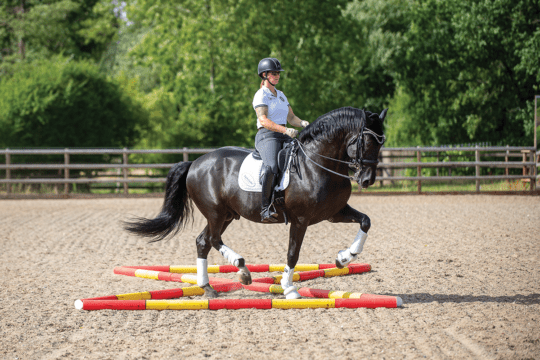Why not make dressage to music something to add to your to-do list this year? We teamed up with experts to find out what’s involved
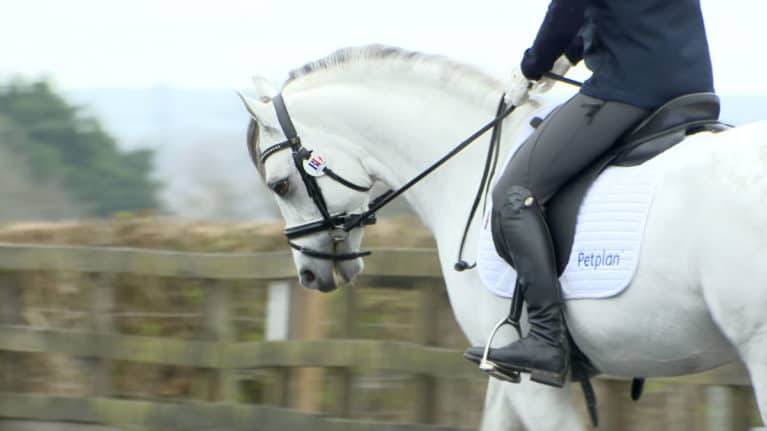
Our experts
Alice Oppenheimer is a Grand Prix dressage rider who owns Headmore Stud in Hampshire. She has produced many horses from the start of their careers to top level and regularly competes in dressage to music classes.
Gaynor Colbourn is a classically trained pianist who has produced unique competition music for some of the world’s best-known dressage riders. In 1980, along with Jennie Loriston-Clarke, she originated dressage to music as we know it today.
Our models
Sam Roberts is a highly successful top show rider but also competes in dressage to keep the ponies’ schooling up to scratch. Here she rides Jo Filmer’s Welsh section B Longhalves Renoir (Levi).
Have a go at dressage to music
Dressage to music is increasing in popularity each year and thanks to Petplan Equine, since 2000, amateur riders have had their own prestigious championships in the form of the Petplan Equine Area Festivals.
If you want to have a go at dressage to music, but you’re not sure where to start, our experts can help. Alice explains the compulsory movements required in a Novice level freestyle test and what the judges are looking for, while Gaynor reveals what types of music will enhance your horse’s paces and personality to gain the higher marks.
Compulsory movements
A freestyle test is just that, but there are certain movements you must include. In a Novice freestyle test, compulsory movements are as follows…
- 15m trot circles on both reins
- medium trot
- at least 20m in free walk and 20m in medium walk
- 20m circles on both reins in canter
- medium canter
- halts at both the beginning and end of your test
Trot circles
You can ride your 15m circles wherever you like, but remember circles should be a continuous smooth turn – judges don’t like square circles. A 15m circle starting from somewhere on the long side will take you to the three-quarter line and it’s a good idea to keep all movements symmetrical. For example, you might ride your first 15m trot circle from E and your second one (on the other rein) from B.
Personally, I wouldn’t recommend including any 20m trot circles in a test where 15m are compulsory because the judge might think you’ve forgotten or that your 15m circles are too big. However, if you do wish to include bigger circles as well, make sure you ride the 15m ones first.
Medium trot
You can ride as many medium trots in your Novice test as you like and have time for. However, the rules stipulate that you only have to ride one. The golden rule here is that if medium trot is your horse’s party piece, then you might want to ride more than one but if it’s fairly average then one is probably best.
Medium trot is usually ridden on the diagonal in a test as it shows it off more clearly to the judge. However, some horses will show better steps down the long side as they have the wall or fence for support. It’s often a case of trial and error to see what works best.
Walk work
Walk can be done on straight lines or circles, so do whatever works best for your horse and fits in with your floorplan. Often horses will stretch down better in free walk on a half-circle as the increase in bend encourages a lower head and neck.
Walk is a useful part of the test as it gives the rider time to sort themselves out a bit. If your floorplan is in the order of trot work then walk work then canter work, you can choreograph your walk to either change or not change the rein, allowing you to start canter on your preferred rein.
Make it clear to the judge when you’re riding medium walk and when you’re in free walk and use the walk to help you get back on track with your music if you’ve got a little ahead or behind it. You can do this by riding a bit deeper into a corner, cutting a corner or riding a slightly bigger or smaller circle.
And as a final top tip, if your horse has a tense walk, do your medium walk as half 10m circles as it helps the horse to look more relaxed.
Medium canter
This can be done on a circle or a straight line (long side or diagonal). Wherever you include it, make sure it’s clear to the judge that you’re showing medium canter.
If you want to make it a bit different from just riding a circle or long side, you could come out of the corner then medium canter to the three-quarter line or ride medium canter along the three-quarter line if you have a horse who’s particularly straight in his canter work.
Halt to attention
You’ll need to show a halt at the start and at the end of your test and in Novice tests you can enter the arena in either walk or trot. Your floorplan will be timed from the first halt to the last halt and at Novice level it must be somewhere between 4.30–5 minutes.
You’re only allowed up to 20 seconds of entry music so while technically your first halt can be anywhere on the centre line, I wouldn’t recommend riding too far along it – halt at D or X or somewhere in the middle of those markers when you enter the arena, but go as far along the centre line as you like for your final one.
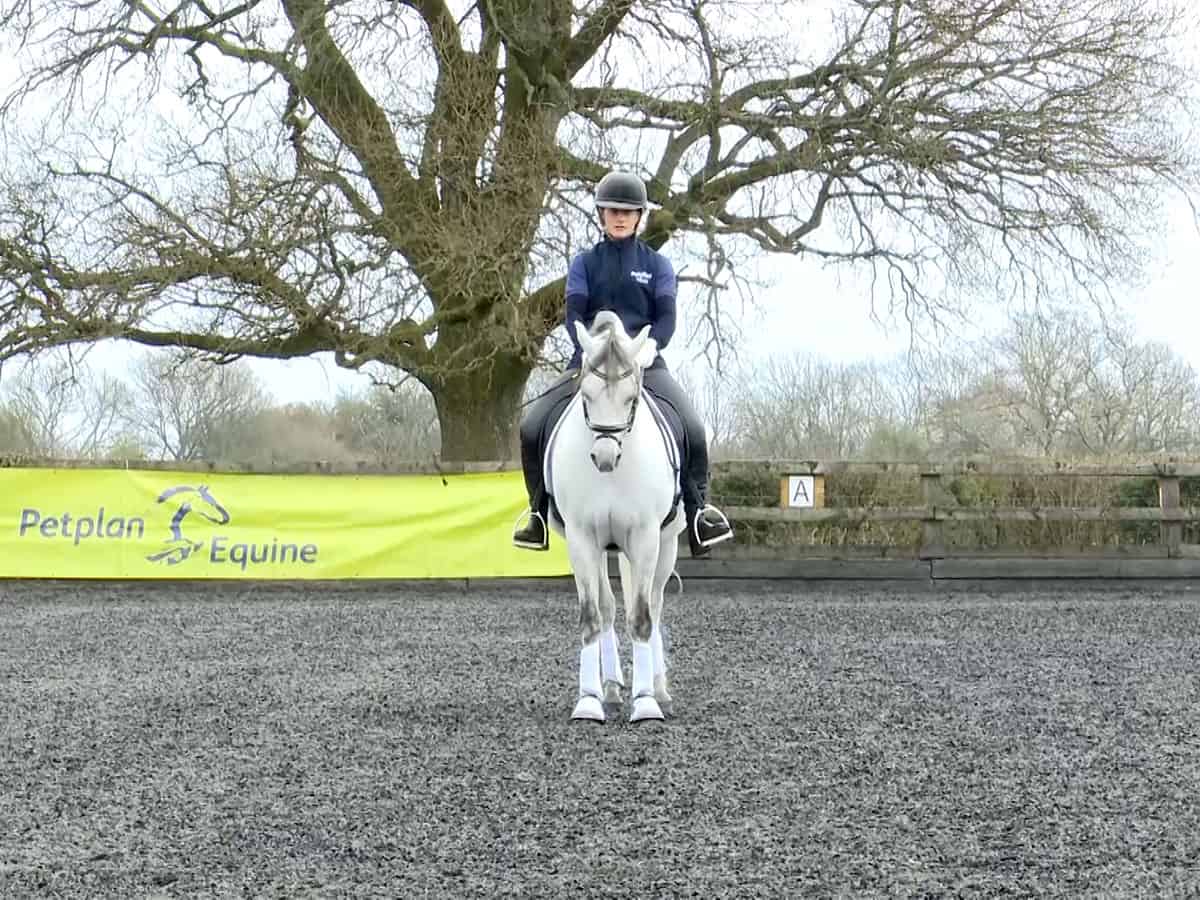
Music matters
The whole ethos of dressage to music is about having fun and bringing joy to people. What’s great is that any rider at any level can have a go and with the Petplan Equine Area Festivals, there are championships to aim for, too.
When putting together music, it’s important for it to reflect the horse’s personality, matches his paces and doesn’t highlight any weaknesses. For example, cobs, ponies and PREs might have quicker paces than many warmbloods, so in these cases I wouldn’t want to choose fast and furious music that might exaggerate this.
Levi’s choices
Levi’s walk has a speed of 102 beats per minute (bpm), which is very quick. Therefore, a nice, gentle march that’s rhythmical and set at the right speed suited him well.
His little legs move quickly in trot, too, with a speed of 163 bpm. For this reason, half-speed swing music is a good choice for making his trot look slower.
And finally for canter, most horses will have a range of between 96-110 bpm. When choosing music for the canter, aim to match the beat to the horse’s inside foreleg as that’s the one the judge will most likely be watching during a test.
Alice and Gaynor’s top tips
- Alice says: “I always make sure I know my music inside out and back to front and exactly where all the cues are. That way, I always know if I’ve got slightly left behind or in front of it.”
- Gaynor says: “Remember, every arena/surface rides differently so just because your floorplan matches the music perfectly in your own arena at home, doesn’t mean it’s guaranteed to do the same when you’re out competing somewhere different.”
- Alice says: “If something goes wrong (say you’ve got behind the music and you haven’t finished your 15m trot circle before the walk music kicks in) always complete the movement before you walk, otherwise you won’t get a mark for it. However, if you’ve already finished the movement and the music changes, change pace with it.”
- Gaynor says: “Whether you do your music yourself or get someone else to do it for you, remember that the right choreography and music often warrant higher marks. Therefore, it’s important to use the music to reflect the movements, such as medium trot and canter.”
To find out more about the Petplan Equine Summer Area Festivals and how you can enter, visit britishdressage.co.uk/petplan-equine-area-festivals-hub/ and petplanequine.co.uk/area-festivals/freestyle-to-music.asp




